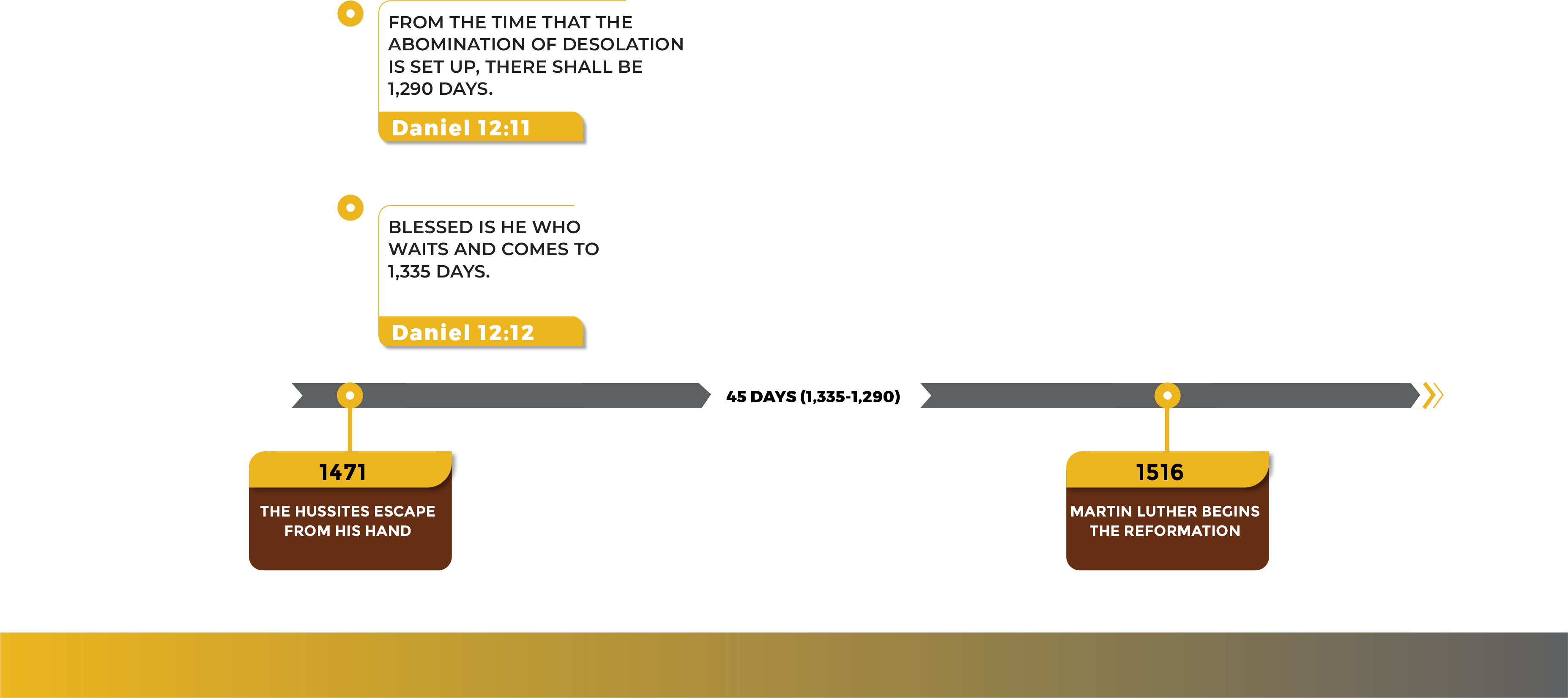
The time, times and half a time is first described in Dan 7:25. The little horn, who came up among the ten horns, held the saints in his hand for a time, times, and half time. In Dan 12:12, we learn that time, times and half a time begins when the abomination of desolation is set up, this is called 1290 days, that is 3 1/2 years, or 43 months of 30 days on the Jewish lunar calender, which is called 1260 days, or 42 months of 30 days on the Solar calendar.
The sin that caused the desolation is described in Dan 8:11. The bishop of Rome exalted himself as high as Christ when he excommunicated the Churches of Asia in AD 193. The saints remained in his hand for exactly 3 1/2 years in days as years, 3.5 X 365.25, 1,278 years, until 1471, when the Moravian Church became the first to break free from the power of the Papacy.
Dan 12:12 says, “blessed is he who waits and comes to 1335 days.” Exactly 45 days, or years, later in 1516, Martin Luther began his Reformation.
NOTES TO the TIMELINE
a) 193
The Quartodeciman controversy of 193 and the resulting letters of excommunication to the Churches of Asia were the subject of the Second Council of Rome, 193, and the Council of Ephesus, 193, described in Eusebius, Church History, Book 5.23; This date is universally recognized by the Library of Congress, Catholic Library Association, Orthodox Church, etc.
b) 1471
The Moravian brethren declared their independence from the Pope in August 1468, but were hunted like deer in the forest of Bohemia for 3 1/2 years, until Archbishop Jan Rokycana died on February 22, 1471. One month later, King George Prodebrady died, and the opposition stopped. George Prodebrady was succeeded by Vladislaus. All the imprisoned members of the brethren were set free, public services began, and the new independent church prospered. This occurred three and a half days, or years, after the death of Bishop Stephan.
c) 1516
While most people are familiar with the date of 1517 as the start of the Reformation, Martin Luther himself, and the Lutheran Church use the date of 1516, agreeing with Hilten’s prophecy. In 1516, Luther held a public discussion with a theologian named Feldkirchen. The Reformation Historian Jean-Henri Merle d’Aubigné wrote, “The disputation took place in 1516. This was Luther’s first attack upon the dominion of the sophists and upon the Papacy, as he himself characterizes it.” And again he wrote, “This disputation made a great noise, and it has been considered as the beginning of the reformation.” (History of the Reformation in the Sixteenth Century, Book 2, Chapter 9)
